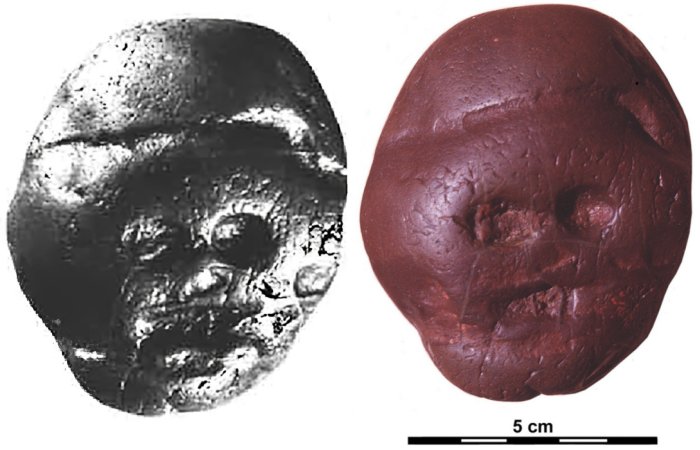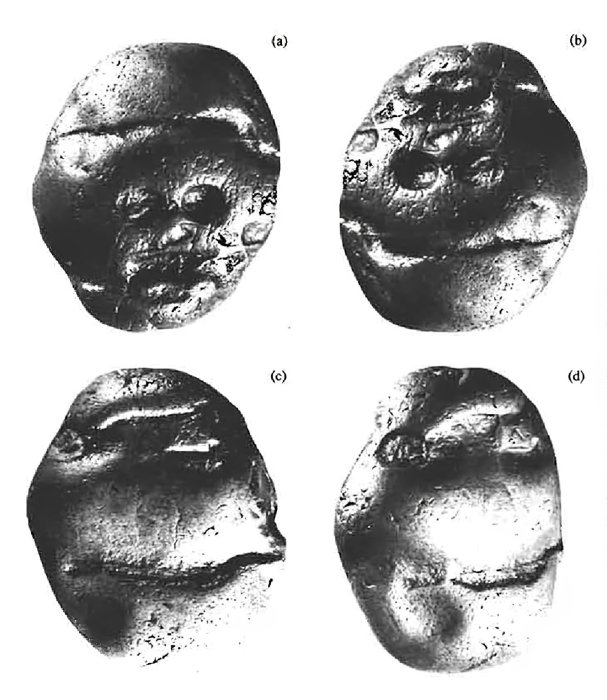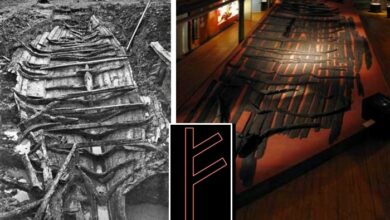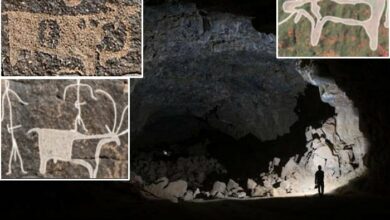Why Are Manuports Like The Makapansgat Cobble Interesting Archaeological Artifacts?

Jan Bartek – AncientPages.com – Archaeologists are interested in so-called manuports for several reasons. Derived from the Latin words “manus,” meaning “hand,” and “portare,” meaning “to carry,” a manuport is a natural object that has been intentionally removed by a person from its initial environment and relocated without undergoing any additional modification.
For instance, consider a scenario where an individual collects a shell, an impressive stick, or an intriguing rock and transports it to another location. In this occurrence, the individual has effectively created what is known as a manuport.
Makapansgat cobble. Credit: Robert G. Bednarik – CC BY-SA 4.0
Manuports created by hominins living millions of years ago give us a unique glimpse into the history of our ancestors.
One especially interesting and also well-known naumport is the Makapansgat cobble that ‘ was first discovered in the 1920s during excavations at an archaeological site in the Makapan Valley, South Africa. The ancient object is a palm-sized rock with distinctive natural markings on it that look like a face.
At the time of the discovery, the Makapansgat cobble was not particularly interesting to scientists. However, as the field of evolutionary biology progressed throughout the twentieth century, aided by the discovery of further hominin species, this perception changed. Scholars recognized that the Makapansgat cobble could offer invaluable insights into the lives of our ancient human ancestors.
Studies of the Makapansgat cobble is the oldest known manuport and is possibly the earliest example of symbolic thinking.
Researchers analyzed the Makapansgat cobble and its discovery site. The studies indicated that the object was composed of jasperite, with the closest known deposits located approximately 32 km from the discovery site. This suggests that someone must have transported it over this considerable distance and was, therefore, a manuport.
The fossilized bones discovered in the identical geological stratum as the cobblestone suggest that the individual likely belonged to the early hominin species known as Australopithecus africanus. The Australopithecines are considered strong candidates for being ancestral relatives of our genus, Homo. Exhibiting bipedal locomotion while possessing elongated arms and ape-like facial features, these beings inhabited Earth between 3.3 and 2.1 million years ago.
We will probably never know why the individual decided to pick up the cobblestone. We also do not know if our long-gone ancestor would have identified the markings on this pebble as a face.
Makapansgat cobble. Credit: Patrick Nagel in Dart (1974)
It remains a challenge to ascertain the intentions of the individual who initially picked up the cobblestone or even to confirm that an ancient ancestor would identify the markings on this pebble as a face. If this was indeed the reason for its removal from its original location, it could potentially be considered one of the earliest known instances of art.
The task of determining whether an unmodified object is a manuport can be complex, and many other potential manuports are subject to intense debate. Other plausible origins could include geological phenomena such as landslides or transportation by different species, including gastroliths in the stomachs of birds.
Furthermore, asserting that manuports are exclusively human is also controversial since other species, like bower birds and octopuses, have been observed collecting shiny or intriguing objects.
Written by Jan Bartek – AncientPages.com Staff Writer
Helm, C. W.; Benoit, J. (2019). “Geomythology in South Africa”. The Digging Stick.
Michelle Aitken – Manuports – Particle
Bednarik, Robert G. “The ‘Australopithecine’ Cobble from Makapansgat, South Africa.” The South African Archaeological Bulletin 53, no. 167 (1998): 4–8. https://doi.org/10.2307/3889256.
[/expand]






